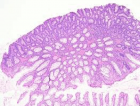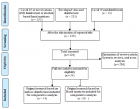Abstract
Research Article
Association of Periprocedural Haemoglobin Reduction and Myocardial Injury in Patients with Unstable Angina Undergoing Percutaneous Coronary Intervention
Sushil Kumar Bagchi*, Md Moniruzzaman, Sharifun Nahar, Md Khalequzzaman, Sanjib Chowdhury and Amal Kumar Choudhury
Published: 23 October, 2023 | Volume 8 - Issue 3 | Pages: 137-141
Background: Patients undergoing percutaneous coronary intervention are at risk of different complications such as periprocedural bleeding and acute hemoglobin reduction that can lead to myocardial injury. Blood loss through the catheter during the procedure and through puncture site haematoma causes periprocedural acute haemoglobin drop.
Objectives: To find out the association between acute haemoglobin reduction and myocardial injury after PCI in patients with unstable angina.
Methods: This prospective observational study was conducted at the National Institute of Cardiovascular Diseases (NICVD) for one year of time. A total of 130 patients were enrolled based on inclusion and exclusion criteria during the study period. Haemoglobin and troponin-I were measured before and after PCI within 24 to 48 hours of the procedure. On the basis of post-procedural acute haemoglobin level, the study population was categorized into two groups: Group I patients with normal haemoglobin levels and Group II patients with significant acute haemoglobin reduction (≥ 1 gm/dl).
Results: A total of 24 patients developed a periprocedural myocardial injury, among them 17 (70.8%) were in the reduced haemoglobin group and 7 (29.2%) in the normal haemoglobin group. Elevation of troponin I after PCI was higher in group II than in group I patients with a statistically significant difference. Multivariate logistic regression analysis showed that haemoglobin reduction was an independent predictor of PMI (OR 1.94; 95% CI, 1.241-8.684; p = 0.01).
Conclusion: Periprocedural haemoglobin reduction in patients with unstable angina was associated with myocardial injury after percutaneous coronary intervention (PCI).
Read Full Article HTML DOI: 10.29328/journal.jccm.1001166 Cite this Article Read Full Article PDF
Keywords:
Periprocedural haemoglobin reduction; Myocardial injury; Unstable angina; Percutaneous coronary intervention
References
- Ioannidis JP, Karvouni E, Katritsis DG. Mortality risk conferred by small elevations of creatine kinase-MB isoenzyme after percutaneous coronary intervention. J Am Coll Cardiol. 2003 Oct 15;42(8):1406-11. doi: 10.1016/s0735-1097(03)01044-1. PMID: 14563583.
- Katus HA, Remppis A, Neumann FJ, Scheffold T, Diederich KW, Vinar G, Noe A, Matern G, Kuebler W. Diagnostic efficiency of troponin T measurements in acute myocardial infarction. Circulation. 1991 Mar;83(3):902-12. doi: 10.1161/01.cir.83.3.902. PMID: 1999039.
- Adams JE 3rd, Sicard GA, Allen BT, Bridwell KH, Lenke LG, Dávila-Román VG, Bodor GS, Ladenson JH, Jaffe AS. Diagnosis of perioperative myocardial infarction with measurement of cardiac troponin I. N Engl J Med. 1994 Mar 10;330(10):670-4. doi: 10.1056/NEJM199403103301003. PMID: 8054012.
- Nienhuis MB, Ottervanger JP, Bilo HJ, Dikkeschei BD, Zijlstra F. Prognostic value of troponin after elective percutaneous coronary intervention: A meta-analysis. Catheter Cardiovasc Interv. 2008 Feb 15;71(3):318-24. doi: 10.1002/ccd.21345. PMID: 18288753.
- Muschart X, Slimani A, Jamart J, Chenu P, Dangoisse V, Gabriel L, Guédès A, Marchandise B, Schröder E. The different mechanisms of periprocedural myocardial infarction and their impact on in-hospital outcome. J Invasive Cardiol. 2012 Dec;24(12):655-60. PMID: 23220981.
- Manoukian SV, Feit F, Mehran R, Voeltz MD, Ebrahimi R, Hamon M, Dangas GD, Lincoff AM, White HD, Moses JW, King SB 3rd, Ohman EM, Stone GW. Impact of major bleeding on 30-day mortality and clinical outcomes in patients with acute coronary syndromes: an analysis from the ACUITY Trial. J Am Coll Cardiol. 2007 Mar 27;49(12):1362-8. doi: 10.1016/j.jacc.2007.02.027. Epub 2007 Mar 9. PMID: 17394970.
- O'Neill WW. Risk of bleeding after elective percutaneous coronary intervention. N Engl J Med. 2006 Sep 7;355(10):1058-60. doi: 10.1056/NEJMe068133. PMID: 16957154.
- Turner SJ, Ketch TR, Gandhi SK, Sane DC. Routine hematologic clinical tests as prognostic markers in patients with acute coronary syndromes. Am Heart J. 2008 May;155(5):806-16. doi: 10.1016/j.ahj.2007.11.037. Epub 2008 Feb 21. PMID: 18440326.
- Lee KH, Lee SR, Kang KP, Kim HJ, Lee SH, Rhee KS, Chae JK, Kim WH, Ko JK. Periprocedural hemoglobin drop and contrast-induced nephropathy in percutaneous coronary intervention patients. Korean Circ J. 2010 Feb;40(2):68-73. doi: 10.4070/kcj.2010.40.2.68. Epub 2010 Feb 23. PMID: 20182591; PMCID: PMC2827805.
- Bassand JP, Afzal R, Eikelboom J, Wallentin L, Peters R, Budaj A, Fox KA, Joyner CD, Chrolavicius S, Granger CB, Mehta S, Yusuf S; OASIS 5 and OASIS 6 Investigators. Relationship between baseline haemoglobin and major bleeding complications in acute coronary syndromes. Eur Heart J. 2010 Jan;31(1):50-8. doi: 10.1093/eurheartj/ehp401. Epub 2009 Oct 12. PMID: 19825809.
- Kruk M, Przyłuski J, Kalińczuk L, Pregowski J, Kaczmarska E, Petryka J, Kłopotowski M, Kepka C, Chmielak Z, Demkow M, Ciszewski A, Piotrowski W, Karcz M, Bekta P, Witkowski A, Ruzyłło W. Clustering of admission hyperglycemia, impaired renal function and anemia and its impact on in-hospital outcomes in patients with ST-elevation myocardial infarction. Atherosclerosis. 2010 Apr;209(2):558-64. doi: 10.1016/j.atherosclerosis.2009.09.074. Epub 2009 Oct 12. PMID: 19883913.
- Leshem-Rubinow E, Steinvil A, Rogowski O, Zeltser D, Berliner S, Weitzman D, Raz R, Chodick G, Shalev V. Hemoglobin nonrecovery following acute myocardial infarction is a biomarker of poor outcome: a retrospective database study. Int J Cardiol. 2013 Nov 20;169(5):349-53. doi: 10.1016/j.ijcard.2013.09.004. Epub 2013 Oct 3. PMID: 24182909.
- Jamaluddin M, Khalil I, Karmakar KK, Kabir H, Litu RI, Rashid B, Chowdhury AHK, Majumder AAS, Khair A, Hasan Z, Kabir S, Islam K, Chowdhury AK, Shaha GK, Ali M, Rahman A, Akanda AK, Rashid M. Outcomes of primary percutaneous coronary intervention (PCI) in NICVD, Dhaka,Bangladesh- our initial University Heart Journal. 2015; 9(2): 83–83.
- Akanda MAK, Ali SY, Islam A, Rahman MM, Parveen A, Kabir MK, Begum L, Barman RC. Demographic Profile, Clinical Presentation & Angiographic Findings in 637 Patients with Coronary Heart Faridpur Medical College Journal. 2011; 6(2).
- Islam AKM, Ali M, Haque SA, Uddin MJ, Islam KQ, Chowdhury AHK, Rahman MT, Aziz In-hospital outcome after percutaneous coronary intervention(PCI) in patients with low haemoglobin level. Cardiovascular Journal. 2009; 2(1):55-60
- Alizadeh K, Pouralizadeh S, Parchami-Ghazaee S, Zavvarehee A, Abdi S, Shakerian F, Ghadrdoost B, Khaleghparast S, Salehi N, Firouzi A, Maadani M. Periprocedural hemoglobin changes and myocardial injury in patients undergoing percutaneous coronary intervention. Res Cardiovasc Med. 2013 Aug;2(3):109-13. doi: 10.5812/cardiovascmed.9595. Epub 2013 Jul 31. PMID: 25478505; PMCID: PMC4253767.
Figures:
Similar Articles
-
Thrombolysis, the only Optimally Rapid Reperfusion TreatmentVictor Gurewich*. Thrombolysis, the only Optimally Rapid Reperfusion Treatment. . 2017 doi: 10.29328/journal.jccm.1001010; 2: 029-034
-
Incidence of symptom-driven Coronary Angiographic procedures post-drug-eluting Balloon treatment of Coronary Artery drug-eluting stent in-stent Restenosis-does it matter?Victor Voon*,Dikshaini Gumani,Calvin Craig,Ciara Cahill,Khalid Mustafa,Terry Hennessy,Samer Arnous,Thomas Kiernan. Incidence of symptom-driven Coronary Angiographic procedures post-drug-eluting Balloon treatment of Coronary Artery drug-eluting stent in-stent Restenosis-does it matter?. . 2017 doi: 10.29328/journal.jccm.1001011; 2: 035-041
-
Diagnostic accuracy of TIMI versus GRACE score for prediction of death in patients presenting with Acute Non-ST Elevation Myocardial Infarction (NSTEMI)Syed Haseeb Raza Naqvi,Tariq Abbas,Han Naung Tun*,Ali Ahmad Naqvi,Zubair Zaffar,Badar ul Ahad Gill,Nisar Ahmad. Diagnostic accuracy of TIMI versus GRACE score for prediction of death in patients presenting with Acute Non-ST Elevation Myocardial Infarction (NSTEMI). . 2019 doi: 10.29328/journal.jccm.1001032; 4: 001-005
-
Is secondary prevention information before discharge adequate after percutaneous coronary intervention?Catrin Henriksson*,Joep Perk. Is secondary prevention information before discharge adequate after percutaneous coronary intervention?. . 2019 doi: 10.29328/journal.jccm.1001034; 4: 012-020
-
Single-centre real world experience of the Mynx Femoral closure device in patients undergoing percutaneous coronary interventionThirunavukarasu S,Zaman M,Hayat A,Aghamohammadzadeh R,Malik N*. Single-centre real world experience of the Mynx Femoral closure device in patients undergoing percutaneous coronary intervention. . 2019 doi: 10.29328/journal.jccm.1001036; 4: 030-035
-
Role of novel cardiac biomarkers for the diagnosis, risk stratification, and prognostication among patients with heart failureJennifer Miao,Joel Estis,Yan Ru Su,John A Todd,Daniel J Lenihan*. Role of novel cardiac biomarkers for the diagnosis, risk stratification, and prognostication among patients with heart failure. . 2019 doi: 10.29328/journal.jccm.1001049; 4: 103-109
-
Evaluation of the predictive value of CHA2DS2-VASc Score for no-reflow phenomenon in patients with ST-segment elevation myocardial infarction who underwent Primary Percutaneous Coronary InterventionMahmoud Shawky Abd El-Moneum*. Evaluation of the predictive value of CHA2DS2-VASc Score for no-reflow phenomenon in patients with ST-segment elevation myocardial infarction who underwent Primary Percutaneous Coronary Intervention. . 2019 doi: 10.29328/journal.jccm.1001061; 4: 171-176
-
Dapt ReviewKARACA Özkan*,KARASU Mehdi,KOBAT Mehmet A,KIVRAK Tarık. Dapt Review. . 2020 doi: 10.29328/journal.jccm.1001088; 5: 060-066
-
Incidence and outcome of no flow after primary percutaneous coronary intervention in acute myocardial infarctionGoutam Datta*. Incidence and outcome of no flow after primary percutaneous coronary intervention in acute myocardial infarction. . 2020 doi: 10.29328/journal.jccm.1001102; 5: 153-156
-
pVAD-assisted left main DK-Crush Bifurcation PCI Post-ViV TAVRSteve Attanasio*,Maria Isabel Camara Planek,Anshuman Das. pVAD-assisted left main DK-Crush Bifurcation PCI Post-ViV TAVR. . 2021 doi: 10.29328/journal.jccm.1001114; 6: 029-032
Recently Viewed
-
Trends in TeledentistryRudrakshi C*. Trends in Teledentistry. J Clin Adv Dent. 2020: doi: 10.29328/journal.jcad.1001014; 4: 004-005
-
Au26-35: A Special Geometrical Structure of Au33 (D2) Cluster with Highly Occupied - 14 Pairs of Double-State DegeneracyK Vishwanathan*. Au26-35: A Special Geometrical Structure of Au33 (D2) Cluster with Highly Occupied - 14 Pairs of Double-State Degeneracy. Ann Adv Chem. 2022: doi: 10.29328/journal.aac.1001035; 6: 063-080
-
Texture of Thin Films of Aluminum Nitride Produced by Magnetron SputteringStrunin Vladimir Ivanovich,Baranova Larisa Vasilievna*,Baisova Bibigul Tulegenovna. Texture of Thin Films of Aluminum Nitride Produced by Magnetron Sputtering. Int J Phys Res Appl. 2025: doi: 10.29328/journal.ijpra.1001106; 8: 013-016
-
Minimising Carbon Footprint in Anaesthesia PracticeNisha Gandhi and Abinav Sarvesh SPS*. Minimising Carbon Footprint in Anaesthesia Practice. Int J Clin Anesth Res. 2024: doi: 10.29328/journal.ijcar.1001025; 8: 005-007
-
On Friedman equation, quadratic laws and the geometry of our universeS Kalimuthu*. On Friedman equation, quadratic laws and the geometry of our universe. Int J Phys Res Appl. 2021: doi: 10.29328/journal.ijpra.1001041; 4: 048-050
Most Viewed
-
Evaluation of Biostimulants Based on Recovered Protein Hydrolysates from Animal By-products as Plant Growth EnhancersH Pérez-Aguilar*, M Lacruz-Asaro, F Arán-Ais. Evaluation of Biostimulants Based on Recovered Protein Hydrolysates from Animal By-products as Plant Growth Enhancers. J Plant Sci Phytopathol. 2023 doi: 10.29328/journal.jpsp.1001104; 7: 042-047
-
Sinonasal Myxoma Extending into the Orbit in a 4-Year Old: A Case PresentationJulian A Purrinos*, Ramzi Younis. Sinonasal Myxoma Extending into the Orbit in a 4-Year Old: A Case Presentation. Arch Case Rep. 2024 doi: 10.29328/journal.acr.1001099; 8: 075-077
-
Feasibility study of magnetic sensing for detecting single-neuron action potentialsDenis Tonini,Kai Wu,Renata Saha,Jian-Ping Wang*. Feasibility study of magnetic sensing for detecting single-neuron action potentials. Ann Biomed Sci Eng. 2022 doi: 10.29328/journal.abse.1001018; 6: 019-029
-
Pediatric Dysgerminoma: Unveiling a Rare Ovarian TumorFaten Limaiem*, Khalil Saffar, Ahmed Halouani. Pediatric Dysgerminoma: Unveiling a Rare Ovarian Tumor. Arch Case Rep. 2024 doi: 10.29328/journal.acr.1001087; 8: 010-013
-
Physical activity can change the physiological and psychological circumstances during COVID-19 pandemic: A narrative reviewKhashayar Maroufi*. Physical activity can change the physiological and psychological circumstances during COVID-19 pandemic: A narrative review. J Sports Med Ther. 2021 doi: 10.29328/journal.jsmt.1001051; 6: 001-007

HSPI: We're glad you're here. Please click "create a new Query" if you are a new visitor to our website and need further information from us.
If you are already a member of our network and need to keep track of any developments regarding a question you have already submitted, click "take me to my Query."


















































































































































